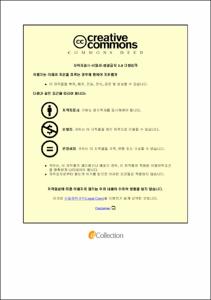염기 교정과 프라임 교정 기술을 이용하여 레쉬-니한 증후군의 치료학적인 유전자 편집
- Abstract
- Inherited human genetic disorders are mostly caused by nucleotide alteration in an associated gene or its regulatory elements. There are various types of nucleotide alterations in the genome such as point mutations, insertions, and deletions. Introduction and correction these nucleotide alterations in living cells and organisms are great challenging to manage the human genetic diseases. Although the conventional CRISPR-based nuclease has been developed and widely applied to treat genes associated with various genetic diseases, the nuclease-based gene editing to correct targeted mutation has several limitations such as low correction frequency, generation of DNA double-strand breaks, and requirement of donor DNA template. To overcome these limitations, recent studies show that CRISPR-mediated base and prime editors allows editing of desired mutations in the genome.
Lesch-Nyhan Syndrome (LNS) well known as rare genetic disease is caused by hypoxanthine-guanine phosphoribosyl transferase 1 (HPRT1) gene mutation. A HPRT1 deficiency causes hyperuricemia and a various spectrum of neurological symptoms such as motor dysfunctions, cognitive impairment, and behavioral disorder. Although the causal role of HPRT1 has been confirmed over the past 50 years, there is no fundamental treatment for LNS patients. To provide proof-of-concept evidence regarding the feasibility of CRISPR based gene therapy, I applied CRISPR-mediated base and prime editors to correct LNS-related HPRT1 gene mutation. I generated several cell lines which introduced LNS patient-derived mutations including c.333_334ins(A), c.430C>T, and c.508C>T with optimized base and prime editors. Then I also corrected these mutations in the cells up to 46.7% and generated corrected cell lines. Furthermore, I analyzed the function of HPRT1 in these established cell lines and confirmed that HPRT1 functions are fully disrupted in the mutant cells and rescued in corrected cells. From these results, I first suggest that CRISPR-mediated base and prime editors can be used for generating LNS model cells and treating the disease by HPRT1 gene correction. These genome editing tools could be widely used to treatment of various types of genetic mutation in LNS patients.
|유전되는 인간의 유전적 장애는 대부분 관련 유전자 또는 그 조절 요소에서 뉴클레오타이드 변형에 의해 발생한다. 유전체에는 점 돌연변이, 삽입, 결실과 같은 다양한 형태의 뉴클레오타이드 변화가 있다. 살아있는 세포와 유기체에 이러한 뉴클레오티드 변화를 도입하고 수정하는 것은 인간의 유전 질환을 관리하는 데 큰 도전이다. 기존 크리스퍼 기반 핵산분해효소가 개발돼 다양한 유전질환과 연관된 유전자 치료에 광범위하게 적용됐지만 표적 돌연변이를 교정하기 위한 핵산분해효소 기반 유전자 편집은 교정빈도가 낮고 DNA 이중 가닥 절단 발생, 외부 DNA 템플릿 요구 등 여러 한계가 있다. 이러한 한계를 극복하기 위해, 최근 연구는 크리스퍼 매개 염기 교정 가위와 프라임 교정 가위가 유전체에서 원하는 돌연변이를 편집할 수 있다는 것을 보여준다.
희귀 유전질환으로 잘 알려진 레쉬-니한 증후군은 하이포잔틴-구아닌 포스포리보실 전이효소 1 유전자 돌연변이에 의해 발생한다. HPRT1 결핍은 고혈증과 운동 기능 장애, 인지 장애, 행동 장애와 같은 다양한 신경학적 증상을 유발한다. 지난 50년 동안 HPRT1의 인과적 역할이 확인되었지만, LNS 환자에 대한 근본적인 치료법은 없다. 크리스퍼 기반 유전자 치료의 실현 가능성에 대한 개념 증명 증거를 제공하기 위해 크리스퍼 매개 염기 및 프라임 교정 가위를 적용하여 LNS 관련 HPRT1 유전자 돌연변이를 교정했다. 최적화된 염기 및 프라임 교정 가위로 c.333_334ins(A), c.430C>T, c.508C>T LNS 환자 유래 돌연변이를 도입한 세포 주 여러 개를 생성했다. 그런 다음 46.7% 효율로 세포 내 돌연변이를 수정하고 수정된 세포주를 생성했다. 나아가 이러한 확립된 세포 주 들에서 HPRT1의 기능을 분석해보니 돌연변이 세포에서 HPRT1의 기능이 완전히 망가졌고 교정된 세포에서 회복된 것을 확인했다. 이러한 결과에서 필자는 먼저 크리스퍼 매개 염기 및 프라임 교정 가위를 사용하여 LNS 모델 세포를 생성하고 HPRT1 유전자 교정을 통해 질병을 치료할 수 있도록 제안한다. 이러한 유전체 편집 도구는 LNS 환자의 다양한 유형의 유전자 돌연변이를 치료하는데 널리 사용될 수 있을 것이다.
- Issued Date
- 2022
- Awarded Date
- 2022-02
- Type
- dissertation
- Alternative Author(s)
- Gayoung Jang
- Affiliation
- 울산대학교
- Department
- 일반대학원 의과학과 의과학전공
- Advisor
- 김용섭
- Degree
- Master
- Publisher
- 울산대학교 일반대학원 의과학과 의과학전공
- Language
- eng
- Rights
- 울산대학교 논문은 저작권에 의해 보호 받습니다.
- Appears in Collections:
- Medical Science > 1. Theses (Master)
- 파일 목록
-
-
Download
 200000595498.pdf
기타 데이터 / 3 MB / Adobe PDF
200000595498.pdf
기타 데이터 / 3 MB / Adobe PDF
-
Items in Repository are protected by copyright, with all rights reserved, unless otherwise indicated.